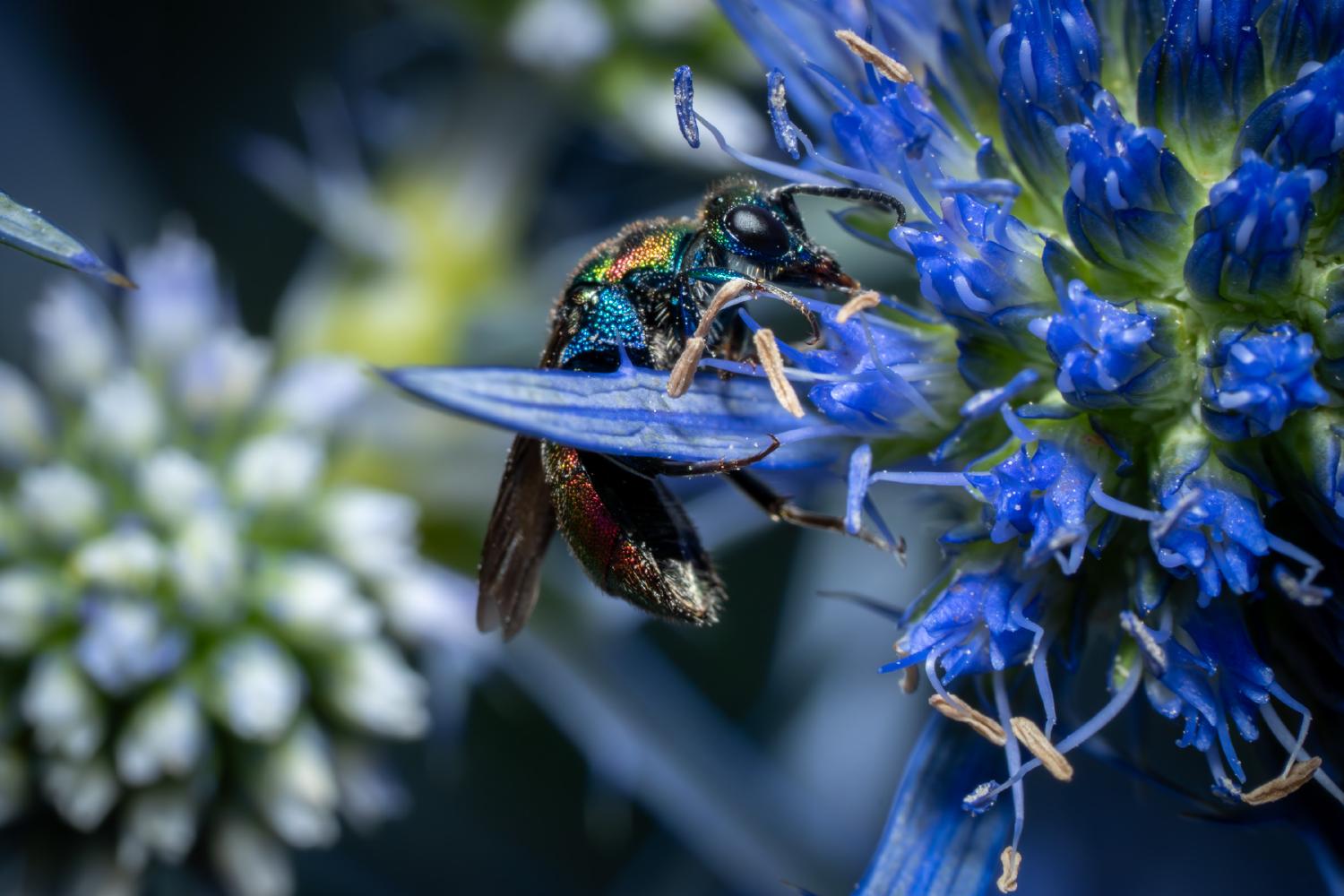Cuckoo Wasps
Lat. “Chrysididae“
family
of infraorder
“Ants, Bees, and Stinging Wasps“
1 family, 4 species
The cuckoo wasp is a type of wasp that lays its eggs in the nests of other species. They are known for their shiny bodies and are often called jewel wasps, gold wasps, or emerald wasps. They are kleptoparasites, meaning they consume the eggs or larvae of their host while it is still young. Cuckoo wasps are solitary and prefer hot and dry climates. The fossil record of this group is limited, with the oldest known fossil dating back to the lower Aptian period.
Hierarchy
Nomenclature
The term “cuckoo wasp” refers to the cuckoo-like way in which wasps in the family lay eggs in the nests of unrelated host species. The term is also used for some wasps outside of the family, such as Sapyga louisi.Chrysididae, the scientific name of the family, refers to their shiny bodies and is derived from Greek chrysis, chrysid-, “gold vessel, gold-embroidered dress”, plus the familial suffix -idae. The common names of many species pay similar tribute to their appearance: jewel wasp, gold wasp, emerald wasp, ruby wasp and so on (cf. French guêpe de feu, “fire-wasp”, and German / Dutch Goldwespe / goudwesp, “gold-wasp”).
Ecology and behavior
Members of the largest subfamily, Chrysidinae, are the most familiar; they are generally kleptoparasites, laying their eggs in host nests, where their larvae consume the host egg or larva while it is still young, then the food provided by the host for its own juvenile. Chrysidines are distinguished from the members of other subfamilies in that most have flattened or concave lower abdomens and can curl into a defensive ball (“volvation”) when attacked by a potential host, in the manner of a pill bug. Members of the other subfamilies are parasitoids of either sawflies or walking sticks and cannot fold up into a ball. Chrysidids are always solitary. They fly mainly in the hottest and driest months of summer in subtropical and Mediterranean climates. They favor dry areas and sandy soils; many species are confined to a narrow type of microhabitat where adults may rest or find hosts to parasitize, for example on bare soil or on dead wood where other solitary wasps have their nest holes. Some species visit flowers such as of the Apiaceae, Asteraceae and Euphorbiaceae.
Evolution
The fossil record of the group is fragmentary, the oldest fossil known being from the lower Aptian Turga Formation of Russia. Other Cretaceous specimens are known from the Albian-Cenomanian amber of France, a Cenomanian limestone in Morocco. The upper Santonian Taimyr amber of Russia and the upper Campanian Canadian amber.
External links
Western Australian Museum - Cuckoo Wasp factsheet Chrysis. net a picture rich and very informative site Family Chrysididae - Cuckoo Wasps at Bugguide, images and information. Chrysididae Identification Guide An online guide to the Chrysidids of Eastern North America Hymis de Images (=Bilder)
Ancestry Graph
Further Information
Copyright

This article uses material from the Wikipedia article Chrysididae the free encyclopedia Wikipedia which is released under Creative Commons Attribution-ShareAlike 4.0 International License). On Wikipedia a list of authors is available.
